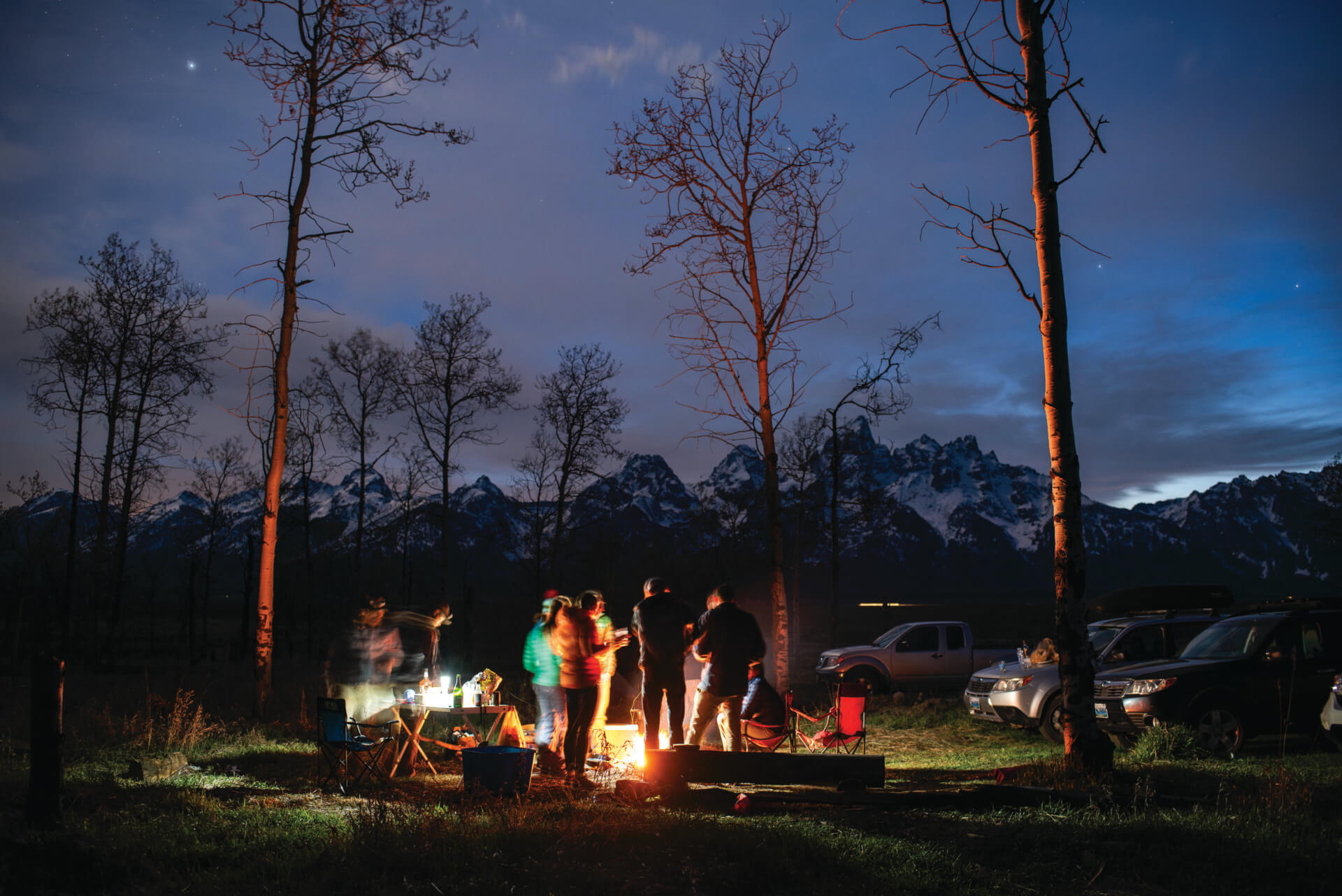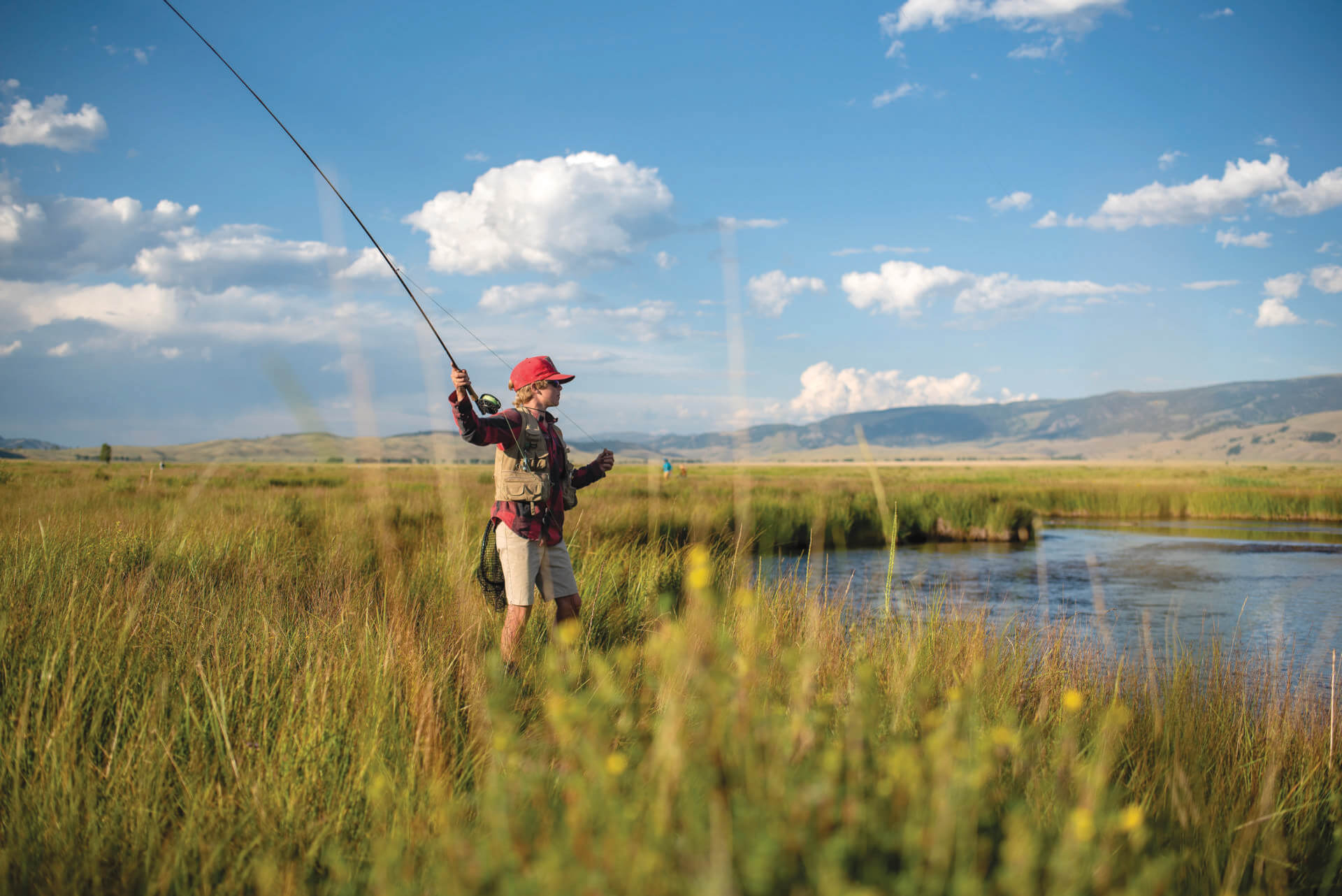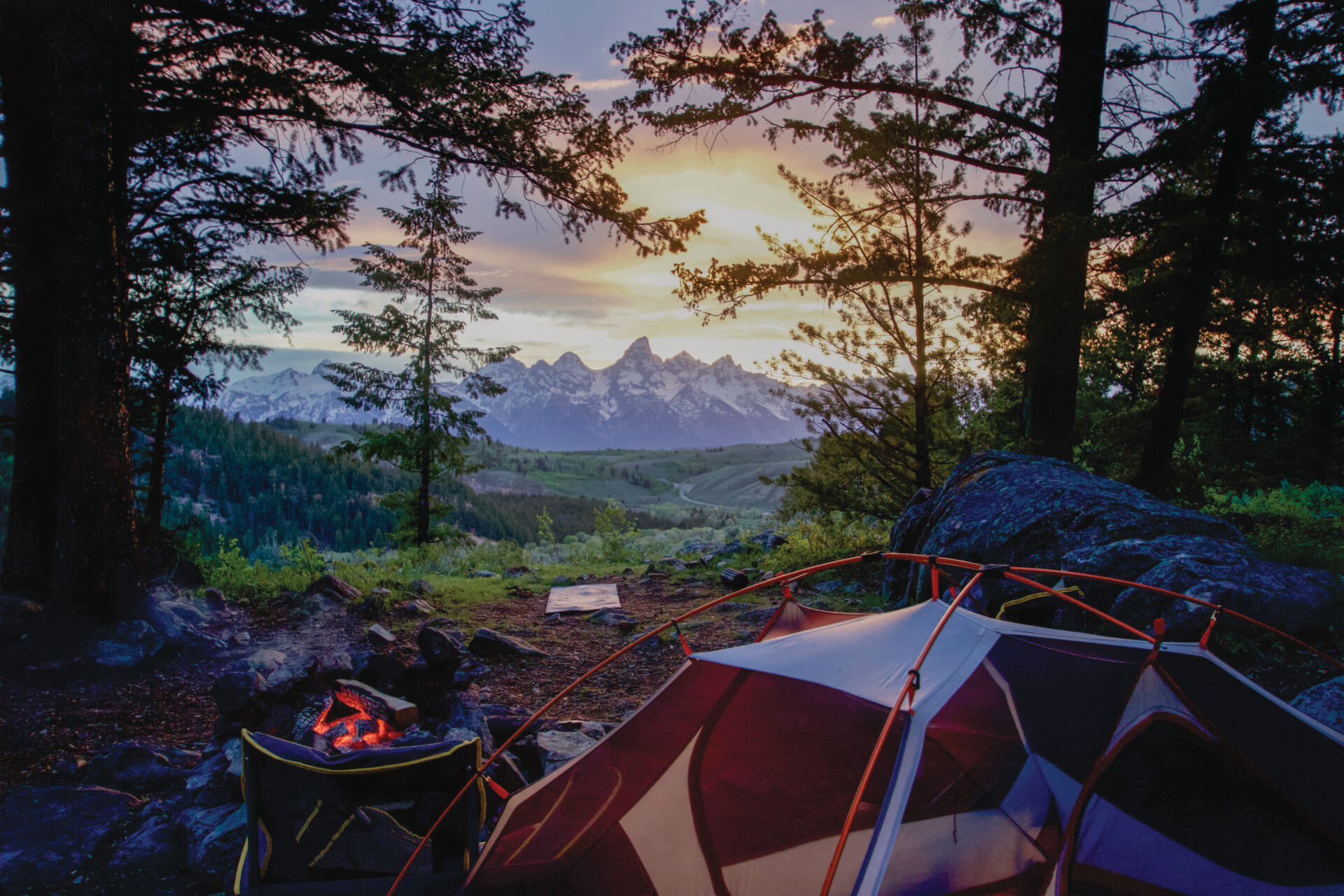Read The
Current Issue
Tread Lightly
Let Leave No Trace principles guide you to recreating responsibly in and around Jackson Hole.
// By Bevin Wallace
Leave No Trace and its principles are not new. “The organization has been around for 30 years, and the notion of ‘leave no trace’ even predates that,” says Mark Eller, foundation director of Leave No Trace. “It was an education program that the Forest Service and the National Park Service started together with partners like NOLS advising on what the principles might look like.” But what many hikers, skiers, and tourists might not realize is that the principles are constantly being evaluated and updated. “A lot of people think Leave No Trace was written on stone tablets and discovered in a burning bush,” Eller says. “But it is more dynamic than that. We do research, we revise the advice we give. We publish research and papers and make sure Leave No Trace stays dynamic and evolving, and is based on science.”
For example, in recent years, Leave No Trace held a zero-landfill outreach and education program in Grand Teton National Park and hosted a Leave No Trace “Hot Spot” education event for park employees and volunteers at GTNP’s String Lake, an area of concern due to “overwhelming use and human-wildlife interactions.” It also conducts research in Grand Teton and Yellowstone National Parks using life-size cutouts of bison or elk and asking visitors how close they think a safe viewing distance would be to the wildlife. Their responses have helped the organization develop practical tips and messaging for wildlife encounters.
“I believe that people usually want to do the right thing and respect the wildlife, but they need more specific guidance than just ‘respect wildlife,’” Eller says. “How do you do that? People don’t always know. I mean, there are lots of people who believe that handing food to animals is helping the animals. So, you need to explain to them that if they are getting this wildlife accustomed to humans as a food source, that could have bad implications for that animal. But we also need to tell them why. It’s not just us scolding people and telling them don’t do it because we told you not to.”
The seven principles of Leave No Trace are: 1) Plan ahead and prepare 2) travel and camp on durable surfaces 3) dispose of waste properly 4) leave what you find 5) minimize campfire impacts 6) respect wildlife 7) be considerate of others.
Still, Eller says the basic seven principles are a great place to start. They are the best guidelines for backcountry etiquette and will help you become more conscious of your impacts on the environment. They are always worth revisiting, especially—and this is crucial—before you reach your outdoor recreation destination. “If somebody shows up at a national park and gets handed a pamphlet about the seven principles of Leave No Trace, that’s a pretty tough ask for them to absorb all that right there on the spot,” he says.
The seven principles of Leave No Trace are: 1) Plan ahead and prepare, 2) travel and camp on durable surfaces, 3) dispose of waste properly, 4) leave what you find, 5) minimize campfire impacts, 6) respect wildlife, 7) be considerate of others.
These principles are fleshed out on Leave No Trace’s website lnt.org, which is also a great resource for current advice and information about the organization’s workshops, outreach, and research. While the seven principles apply to all outdoor recreation activities, some activities require more specific guidelines.
Here are some recommendations for utilizing the principles when heading outdoors in and around Jackson Hole.

Camping—Be a Good Neighbor
All of the LNT principles apply nowhere more than they do with camping and backpacking. Before you go, you should know how to properly put out a fire (pour water on it until it’s cool to the touch) and store your food securely; and where to camp that will cause the least impact on the landscape. For camping around Jackson Hole, the nonprofit Friends of the Bridger-Teton recommends choosing a campsite that is at least 200 feet from any lakes, streams, or rivers and that is on a “hardened surface” that has been used for camping before. Also, pack out everything you pack (or drive) in.

Wildlife Watching—Don’t Feed the Bears
Because it’s not generally physically strenuous and can be highly rewarding, wildlife watching is one of the most popular activities for people coming to the Greater Yellowstone area. Not only that, wildlife watching can happen when you’re doing almost any other activity in the backcountry—hiking, skiing, mountain biking, fishing, hunting, camping, and photography. But wildlife is wild; animals can be unpredictable and defensive, especially when they are with their young. Stay 25 yards from most wildlife and at least 100 yards from predators like black bears, grizzly bears, and wolves.
A practical tip Leave No Trace devised for wildlife watching is the “thumb trick”—if you hold up your thumb at arm’s length and you can’t block out the entire animal with your thumb, you’re too close.

Fly Fishing—Catch and Release
Anglers should know all the local fishing regulations, which are available from all Wyoming Game & Fish offices and are in place to protect native fish populations. To avoid stressing out the trout, don’t fish in the heat of the day when the fish should be taking it easy. If you catch a fish in warm water, it’s likely the fish will die after being released. For the same reason, try not to fight a fish until it’s exhausted. The Grand Teton National Park and the Bridger-Teton National Forest ask that anglers wash their boots, waders, boats, and trailers to help prevent the spread of aquatic invasive species, which can harm native fish. And never move a live fish from one body of water to another. JH





